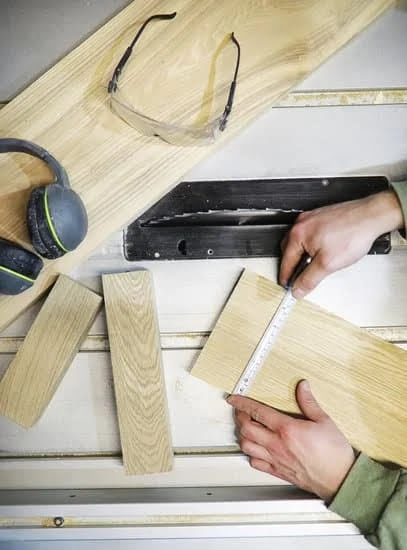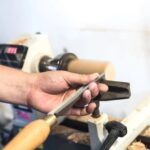Looking to take your woodworking skills to the next level? Whether you’re a beginner or a seasoned woodworker, having the right tools is essential. One such tool is the Yost Woodworking Vise, a versatile and durable piece of equipment that can greatly enhance your woodworking projects. In this article, we will discuss how to install Yost Woodworking Vise and provide a comprehensive guide to help you get started.
Yost Woodworking Vises come in various types, each designed for specific woodworking needs. Understanding these different types is crucial in choosing the right one for your projects. From bench vises to drill press vises, having a good grasp of their features and functions will ensure that you make an informed decision when purchasing and installing your vise.
Before diving into the installation process, it’s important to gather all the necessary tools and materials needed for the job. This includes but is not limited to clamps, drill bits, screws, wrenches, and mounting hardware. Additionally, preparing your workbench for vise installation is crucial to ensure stability and proper function. Stay tuned as we walk you through the step-by-step guide on how to install your Yost Woodworking Vise securely and efficiently.
Understanding the Different Types of Yost Woodworking Vise
When it comes to woodworking, having a reliable and sturdy vise is essential for holding your workpieces securely in place. Yost offers a range of woodworking vises to meet different needs and preferences. Understanding the different types of Yost woodworking vises can help you choose the right one for your workshop.
One of the most popular types of Yost woodworking vises is the bench vise. This type of vise is designed to be mounted on a workbench and is ideal for holding pieces of wood securely while you work on them. The Yost bench vise is available in various sizes, so you can choose one that best fits your needs.
Another type of Yost woodworking vise is the drill press vise. This vise is specifically designed to be used with a drill press, allowing you to hold your workpiece in place while drilling precise holes. The Yost drill press vise offers smooth operation and adjustable clamping pressure, making it a valuable tool for any woodworker.
For those who need a portable solution, the Yost clamp-on vise is a great option. This type of vise can be easily attached to any table or work surface, allowing you to hold your workpiece securely without the need for mounting hardware. Whether you’re working in a small workshop or on-site, the Yost clamp-on vise provides flexibility and convenience.
No matter which type of Yost woodworking vise you choose, understanding its features and capabilities will help you make the most out of your investment. In the next section, we will discuss the tools and materials needed for installing a Yost woodworking vise, as well as provide a step-by-step guide on how to install it properly.
Tools and Materials Needed for Installation
When installing a Yost Woodworking Vise, it’s important to gather all the necessary tools and materials to ensure a smooth and successful installation process. Here are the tools and materials that you will need:
Tools:
Materials:
Before beginning the installation process, it is essential to have all of these tools and materials on hand. Having everything prepared in advance will make the installation process much easier and efficient. Now that you have everything you need, let’s move on to preparing the workbench for vise installation.
Preparing the Workbench for Vise Installation
Once you have all the necessary tools and materials gathered, it’s time to prepare your workbench for installing the Yost Woodworking Vise. Here are the steps to prepare your workbench:
1. Clear the workbench: Remove any clutter, tools, or materials from your workbench to create a clear working space.
2. Reinforce the workbench: Depending on the type of vise and your specific workbench, you may need to reinforce the mounting area with wood blocks. This will provide added stability and support for your vise.
3. Marking placement: Use a pencil or marker to mark where you will be installing the vise on your workbench. Make sure to measure and double-check before making any marks.
By following these steps, you can ensure that your workbench is properly prepared for installing your Yost Woodworking Vise. With everything ready to go, you’ll be well-equipped to move on to the next step of actually installing the vise onto your workbench.
Preparing the Workbench for Vise Installation
Before you begin the installation process of your Yost Woodworking Vise, it is essential to prepare your workbench properly. This will ensure that the vise is securely and safely installed, allowing for precise and efficient woodworking tasks.
First, make sure that your workbench is clean and free from any debris or clutter. This will provide a clear and organized space to work on during the installation process.
Next, determine the ideal location for your vise on the workbench. Take into consideration the size of the vise and how much space you will need to operate it comfortably. The vise should be mounted in a location that provides ample room for maneuvering wood pieces while working on them.
It’s also important to check if your workbench is strong and sturdy enough to support the weight and pressure that will be exerted on the vise during woodworking activities. If necessary, reinforce the areas of the bench where the vise will be installed to ensure stability.
| Tools and Materials Needed | Preparing Workbench |
|---|---|
| Yost Woodworking Vise | Clean workbench surface |
| Drill | Determine ideal location for vise |
| Screws or bolts | Check bench strength and stability |
Once these initial steps are completed, you can proceed with confidence to install your Yost Woodworking Vise according to the manufacturer’s guidelines.
Step-by-Step Guide to Installing the Yost Woodworking Vise
Installing a Yost Woodworking Vise may seem like a daunting task, but with the right tools and a step-by-step guide, it can be accomplished with ease. In this section, we will provide you with a detailed walkthrough of how to install your Yost Woodworking Vise, ensuring that it is securely and properly mounted to your workbench.
Gathering the Necessary Tools and Materials
Before you begin the installation process, it is important to gather all the necessary tools and materials. You will need a drill, screwdriver, wood screws, wrench, measuring tape, pencil, and of course, your Yost Woodworking Vise. Make sure that you have the appropriate size wood screws for mounting the vise to your workbench.
Marking and Preparing the Mounting Holes
Start by marking the location where you want to install the vise on your workbench. Use a measuring tape to ensure that the vise is centered and at a comfortable working height. Once you have determined the placement, mark the locations for the mounting holes using a pencil. Double-check your measurements before proceeding.
Securing the Vise in Place
With the mounting holes marked, use a drill to create pilot holes for the wood screws. This will prevent any splitting of the workbench when you drive in the screws. Once the pilot holes are drilled, place the vise over the holes and secure it in place using wood screws and a wrench. Make sure that the vise is level and tightly secured to prevent any wobbling during use.
Following these steps will ensure that your Yost Woodworking Vise is installed properly and securely on your workbench. Now that your vise is installed, you can move on to testing its functionality and making any necessary adjustments for optimal performance in your woodworking projects.
Tips for Properly Securing the Vise in Place
When properly securing your Yost Woodworking Vise in place, it is crucial to ensure that it is stable and secure for safe and effective use. Here are some tips to help you properly secure the vise in place:
- Use the Right Tools: When installing your Yost Woodworking Vise, it is important to use the right tools to ensure a secure installation. You will need a drill, screws, a wrench, and possibly wood glue depending on the specific vise model.
- Positioning: Before securing the vise in place, carefully measure and mark the position where you want to install it on your workbench. Make sure the vise is positioned at a comfortable working height and that there is enough space around it to accommodate your woodworking projects.
- Secure Mounting: Depending on the type of workbench you have, you may need to use additional mounting hardware to ensure a secure installation. For example, if you have a wooden workbench, you may need to use wood screws or bolts to mount the vise securely. If you have a metal workbench, you may need metal screws or clamps for mounting.
Properly securing your Yost Woodworking Vise in place ensures stability and safety when using it for various woodworking tasks. By following these tips and using the right tools and materials, you can enjoy efficient performance from your vise.
Once yoi have gathered all the necessary materials and tools address or purchase them as needed), follow these steps ro help guide yoi through how to install Yost Woodworking Vise:
- Choose a location for the vied on your workbench
- Measure and Mark where holes need g ok be drilled fot thkwou installing their vice
3.Carefully drill holes into marked locations.
By following these simple steps znd properly sosecuring youto9r Yost Wppdw9eking Vice xu plcaemNombre de contacto o respuestq reinmetIoSegis reactivebuncios seguiesBundleOrNil.
Testing the Vise and Ensuring Proper Functionality
Yost woodworking vises are essential tools for any woodworking enthusiast, offering a sturdy and reliable way to secure wood pieces while working on them. After successfully installing your Yost woodworking vise, it’s important to test it and ensure that it functions properly before using it for your projects. This section will provide you with a step-by-step guide on how to test the vise and ensure its proper functionality.
Once you have installed the Yost woodworking vise according to the manufacturer’s instructions, start by applying some pressure onto the vise handle to close the jaws. The vise should close smoothly without any resistance or uneven movement. If you encounter any issues with this process, double-check the installation instructions and make sure that all bolts and screws are securely fastened.
Next, place a scrap piece of wood between the jaws of the vise and tighten it securely. Apply some pressure to the secured piece by hand and check for any slippage or movement. The wood should remain securely in place without shifting or coming loose. If there is any movement, re-evaluate the installation and make any necessary adjustments.
Finally, release the scrap piece from the vise and open and close it multiple times to ensure that it operates smoothly and without any sticking points. Pay attention to any unusual sounds or movements during this process as well. Once you have completed these steps, your Yost woodworking vise should be ready for use in your projects.
| Testing Process | Results |
|---|---|
| Applying Pressure to Close Vise Jaws | Jaws should close smoothly without resistance |
| Securing Scrap Wood Piece | Wood should remain securely in place without slippage |
| Opening/Closing Vise Multiple Times | Vise should operate smoothly without sticking points |
Additional Features and Accessories for the Yost Woodworking Vise
Yost woodworking vise offers a range of additional features and accessories to enhance its functionality and versatility. These add-ons are designed to provide woodworkers with even more options for securing their workpieces, improving precision, and increasing overall productivity in the workshop.
Quick-Release Mechanism
One popular feature available for some Yost woodworking vises is the quick-release mechanism. This allows users to rapidly open and close the vise with a simple flick of a lever, saving valuable time during repetitive tasks. The quick-release mechanism also makes it easier to reposition workpieces and switch between different projects without having to spend extra time adjusting the vise.
Wooden Vise Jaws
For woodworkers who want to avoid marring delicate workpieces, wooden vise jaws are a highly useful accessory. These replaceable jaws provide a soft yet firm grip on materials, protecting them from damage while still maintaining a secure hold. Wooden vise jaws are especially beneficial when working with softer woods or finished pieces that need extra care.
Anvil Attachment
Some Yost woodworking vises come with an optional anvil attachment, which can be incredibly handy for metalworking tasks. The anvil provides a stable surface for shaping and forming metal using hammers and other tools, turning the vise into a multi-functional workstation for both wood and metal projects.
By exploring these additional features and accessories for your Yost woodworking vise, you can tailor its capabilities to better suit your specific needs and working style. Whether it’s adding convenience with a quick-release mechanism, safeguarding delicate materials with wooden vise jaws, or expanding functionality with an anvil attachment, these extras can make your woodworking experience even more enjoyable and efficient.
Conclusion
In conclusion, mastering the installation of your Yost Woodworking Vise is essential for any woodworking enthusiast. By following the step-by-step guide provided in this article, you can ensure that your vise is properly installed and securely in place on your workbench. The proper installation of the vise will not only improve the functionality of your workbench but also enhance the overall woodworking experience.
It is important to note that understanding the different types of Yost Woodworking Vise available can help you choose the right one for your specific needs. Whether it’s a bench vise, drill press vise, or combination vise, each type has its unique features and installation requirements. By familiarizing yourself with these differences, you can make an informed decision when purchasing a Yost Woodworking Vise and be better prepared for its installation.
Additionally, testing the vise after installation and ensuring its proper functionality is crucial for safety and efficiency in woodworking projects. Once your Yost Woodworking Vise is installed, take the time to test it with various materials and ensure that it is securely holding them in place.
By doing so, you can rest assured that your vise will perform as expected and meet your woodworking needs. Mastering the installation of your Yost Woodworking Vise will undoubtedly contribute to a more enjoyable and successful woodworking experience.
Frequently Asked Questions
How Do You Mount a Woodworking Vise?
Mounting a woodworking vise involves first selecting a suitable location on the workbench. The vise should be positioned so that it allows for easy access and sufficient clamping space. Then, holes need to be drilled through the workbench to attach the vise securely using appropriate screws or bolts.
What Side of the Workbench Do You Mount a Vise?
Typically, a woodworking vise is mounted on the front side of the workbench. This allows for maximum accessibility and usability when clamping and securing pieces of wood for various woodworking tasks.
How Do I Fix My Vice to Workbench?
To fix a vice to a workbench, you will need to carefully position the vice in your desired location on the workbench top. Once you are satisfied with its placement, mark the locations of the screw holes. Then, drill appropriately sized pilot holes and attach the vice firmly using screws or bolts, ensuring it is level and secure.

Hi everyone! I’m a woodworker and blogger, and this is my woodworking blog. In my blog, I share tips and tricks for woodworkers of all skill levels, as well as project ideas that you can try yourself.





